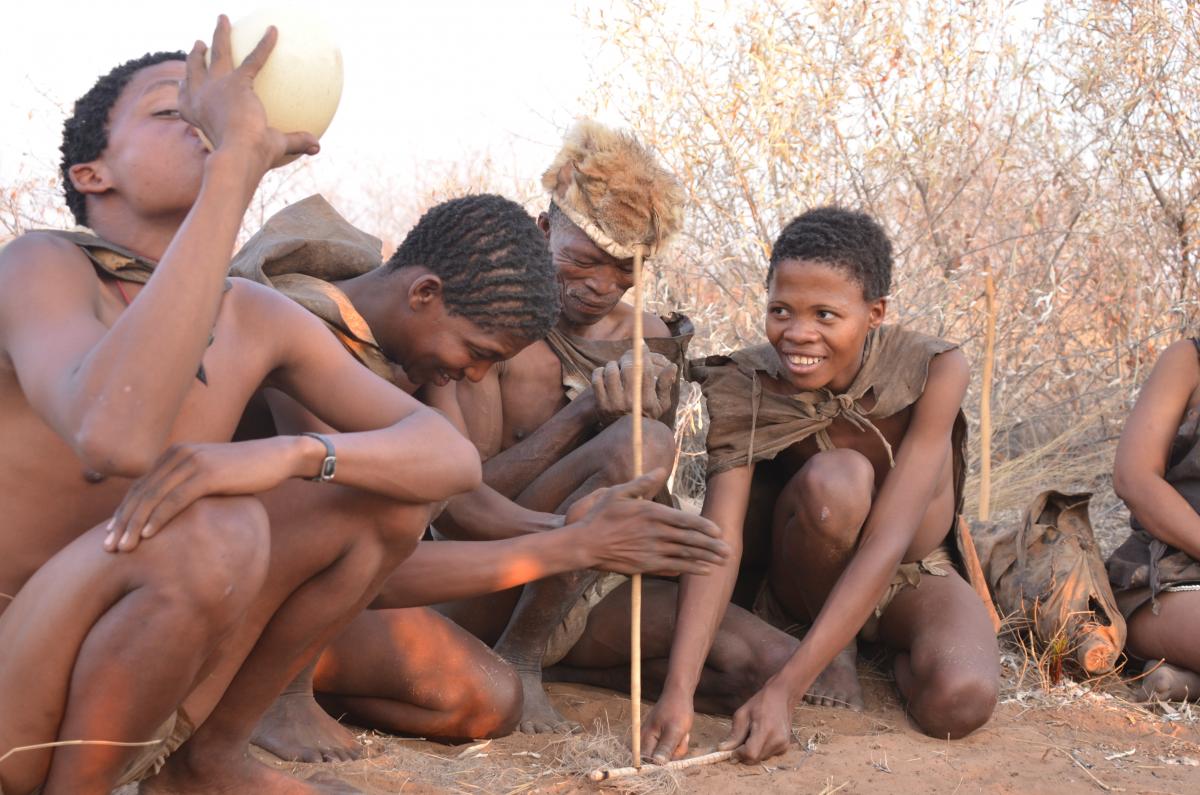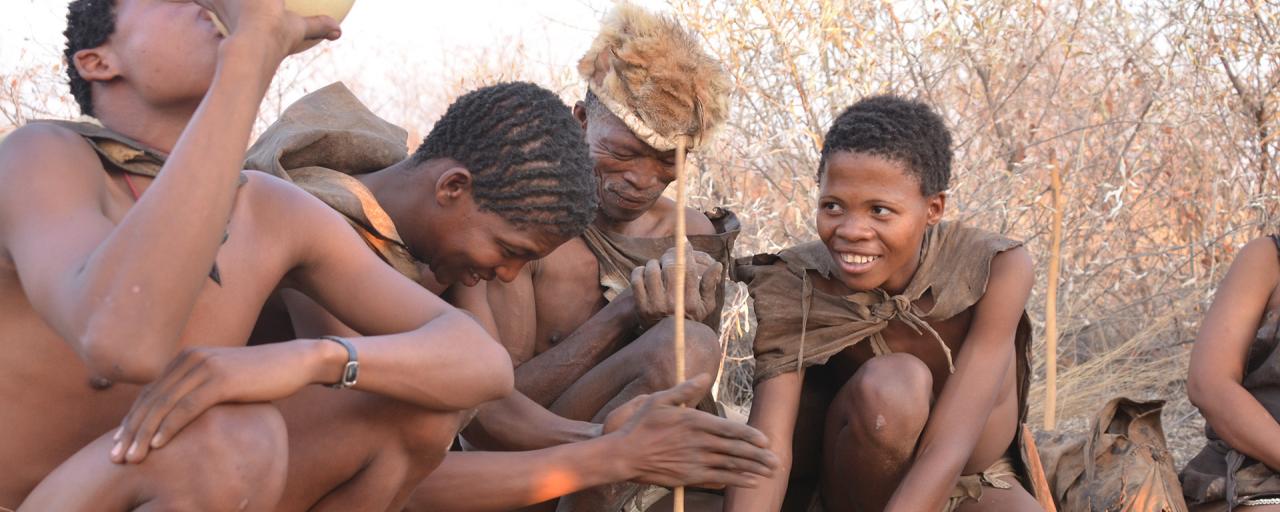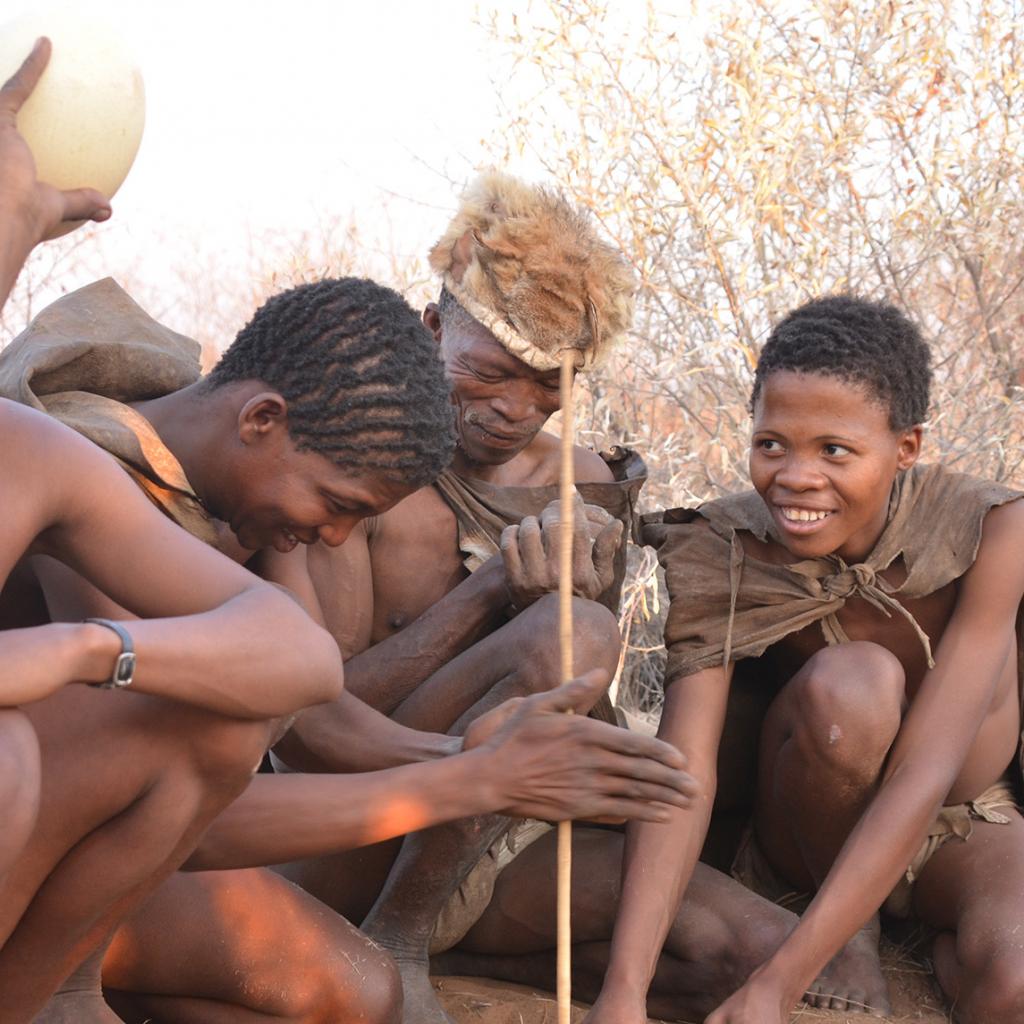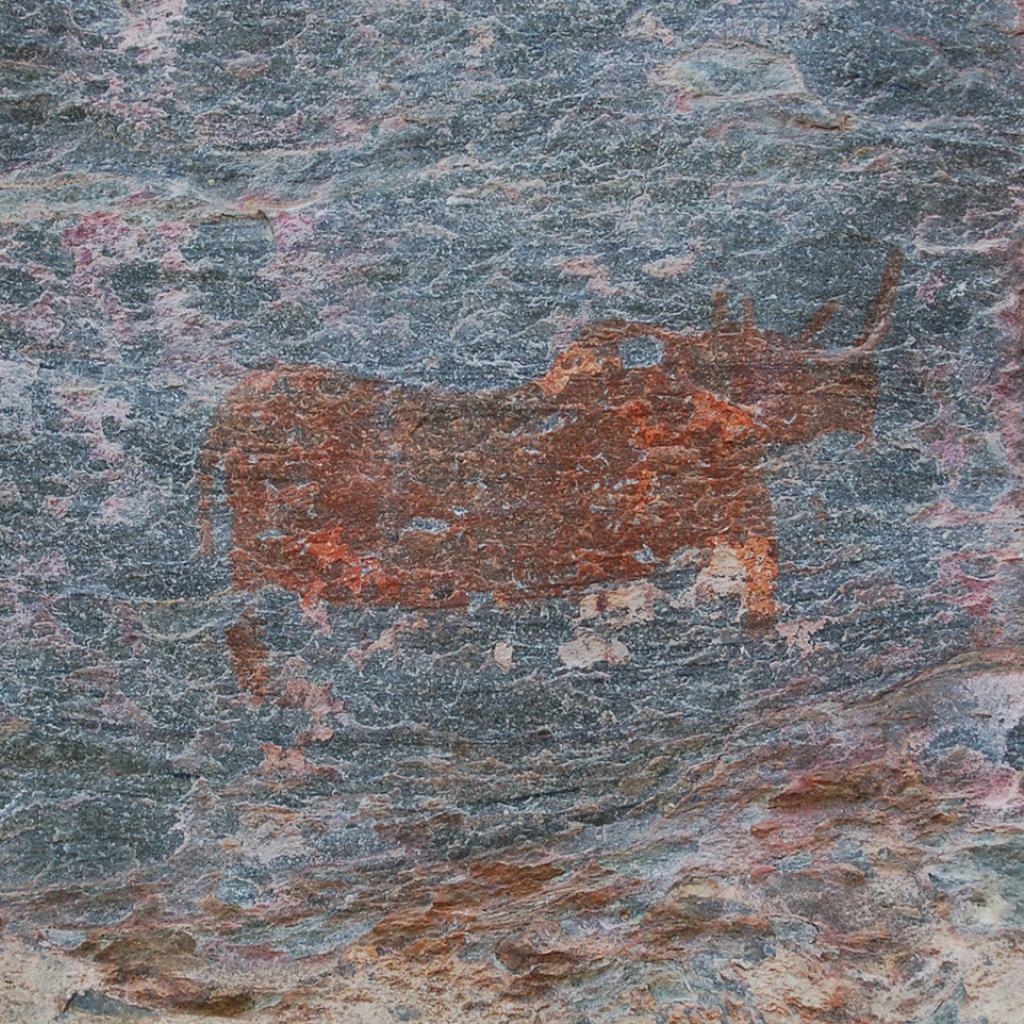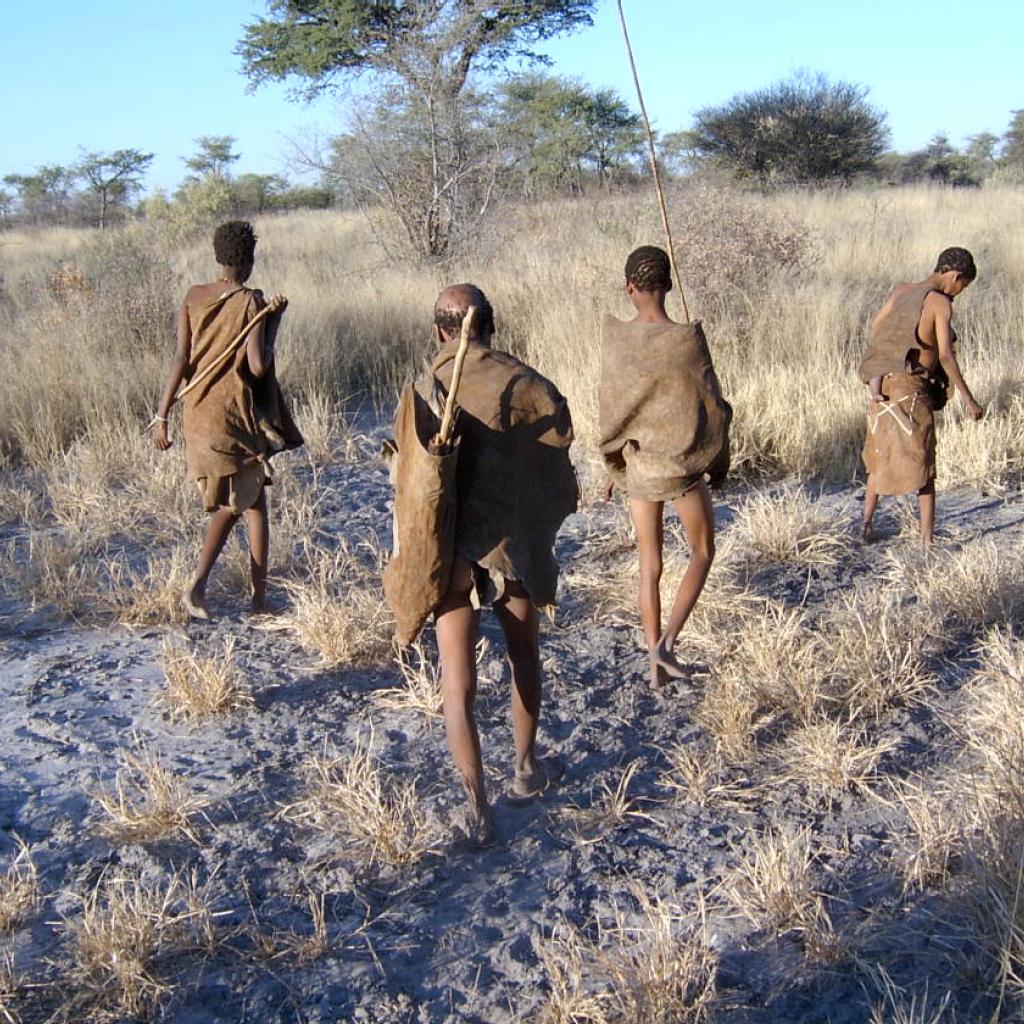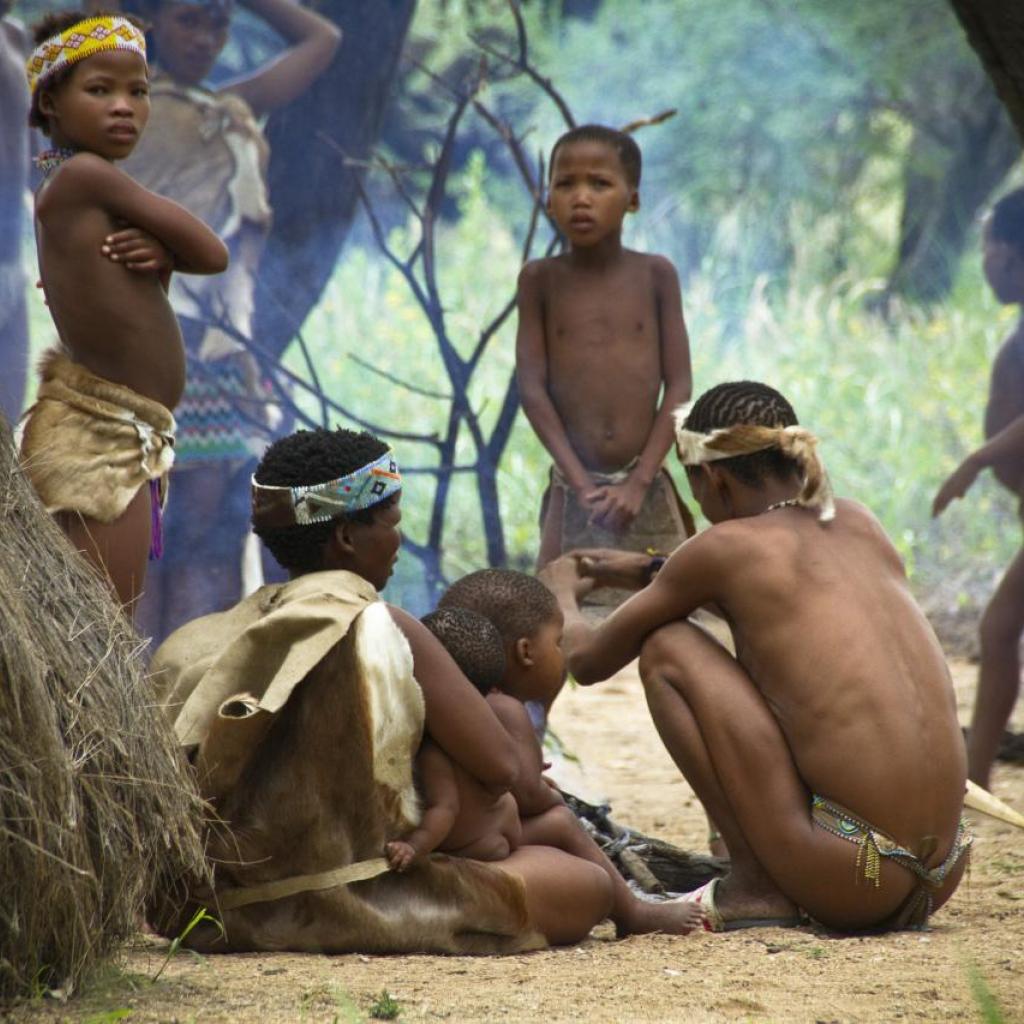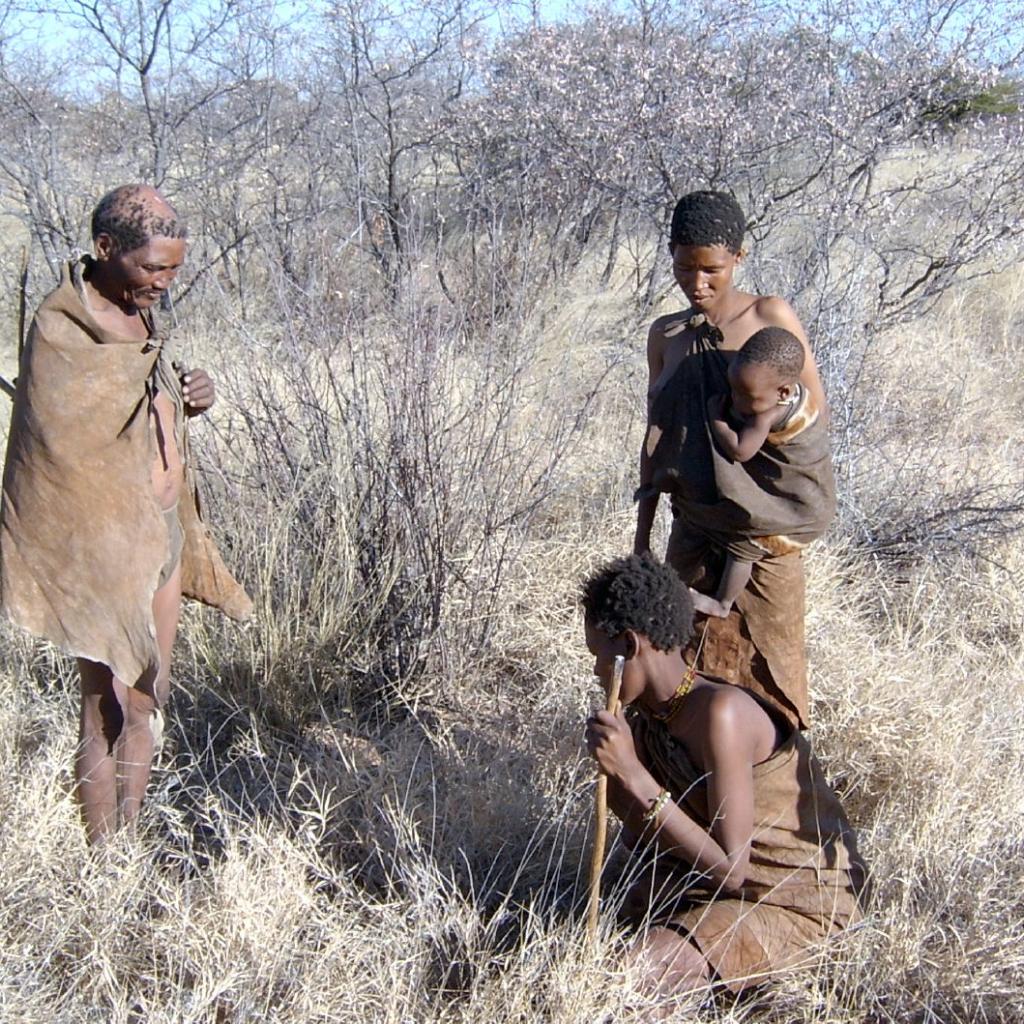The San are a nomadic hunter-gatherer population that has been living in the vast Kalahari desert region for over 20,000 years; they are present in Botswana and Namibia in good number, but also in South Africa and Zambia in small part.
The San are also known by the name of Bushmen, but this definition is sometimes used with a derogatory value, though it literally means "bush men" and this definition is not displeasing to the San; while the term "San" was attributed to them by the Khoikhoi and means "stranger" or simply "different", different in the sense that unlike the Khoikhoi, the San did not possess cattle.
The San's language is characterized by "click" sounds that are made by snapping the tongue against the palate, the teeth or the lips; they count up to 20 different clicks, but the most used are of three types: the palate one, obtained by removing the tongue from the palate, the lateral ones, obtained by moving the tongue from the upper right teeth and the dental ones, when the tongue presses on the upper incisors.
The San are small in size and generally with light yellow skin, that usually ages prematurely, making them very wrinkled.
The Bushmen are hunter-gatherers, 75% of their diet consists of vegetable, including berries, walnuts, roots and melons, that are mainly harvested by women; while the remaining 25% is made up of meat that is hunted by men who hunt, using poisoned arrows and spears.
The Bushmen are tendentially a nomadic population who build temporary shelters, built by women; these are simple repairs made with the wood that is harvested in the desert and covered with boughs and braided grass mats.
The simple huts are used to guard a few personal belongings and to protect the meat that is being dried; to sleep the San curl up in a hole, dug in the open sand near the fire, and cover themselves with a cloak.
Inside the village there are tanks of ostrich eggs full of water set in the sand, the San get the water by sucking it out of the ground through a filtering rod, that is made with an ostrich feather and grass stems and they then transfer it to the eggshells; they get water even digging in the desert looking for big watery tubers.
Most Bushmen are monogamous, but if a hunter is skilled enough to get a lot of food, he can afford to have a second wife as well.
The life of the San is characterized and influenced by the inhospitable territory where they live, 20% of the children die in the first year of life, 50% die before the age of 15, while the average life expectation is about 45- 50 years and only 10% get over 60 years of age.
The San believe in a divinity that is nothing but the invisible representation of nature and all that surrounds them; a good and benevolent god, Kang, who is opposed to the evil god Gauab.
They also believe in other supernatural beings and the spirits of the dead, of whom they are very afraid; the Bushmen bury their dead in a fetal position with their knees gathered on their chests together with all the objects belonging to them in life, then they highlight the place by covering the tomb with stones.
After the burial, the group abandons the place where the tomb is located and moves elsewhere, because the Bushmen fear the spirits of the dead.
The San do a rite of passage for both women and men
The rite of passage for a boy is his first hunting trip; while girls, when they become women, have to dance the dance of the eland and, when they are menstruating, they must remain segregated in a hut.
In the past they cut the phalanx of a finger of the right hand to the boys and of the left hand to the girls, it seems that this was a religious ritual, recurrent also between the Damara of the mountains and the Nama; while the custom of wearing a piece of wood in the nasal septum seems to be a custom to some tribes of the West.
The San’s clothing is minimal, men wear a small ankle or antelope skirt, a leather coat, and everything they need is kept in a small shoulder bag.
The few objects that the San use are a bone pipe, tobacco and a punch, obviously they cannot miss the tools for hunting, the arch and a quiver made of Aloe Dichotoma, known as quiver tree; the San carry with then the arrows, the poison extracted from the Euphorbia damarana and the wooden sticks they use to light the fire.
Sometimes they wear a cap made of antelope fleece and necklaces made of ostrich eggs, the most experienced hunters wear accessories made with elephant or giraffe tail hair as a hunting trophy.
Women in addition to leather coats, used to carry small children, wear a double leather apron that goes down to the front and back, they are usually used to decorate their hair, arms, and legs with rings and necklaces made with small discs of ostrich eggs.
Lifestyle and economy based on hunting and harvesting have remained virtually unchanged for tens of thousands of years, unfortunately, however, the ancestral lands of the Bushmen are in the heart of the world's richest diamond area and the strong interest in extraction of these stones endangers the survival of this ancient population.
